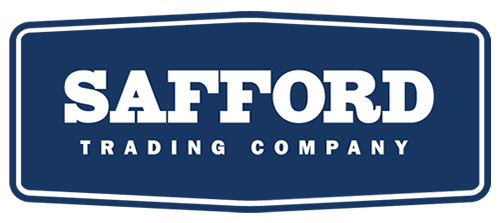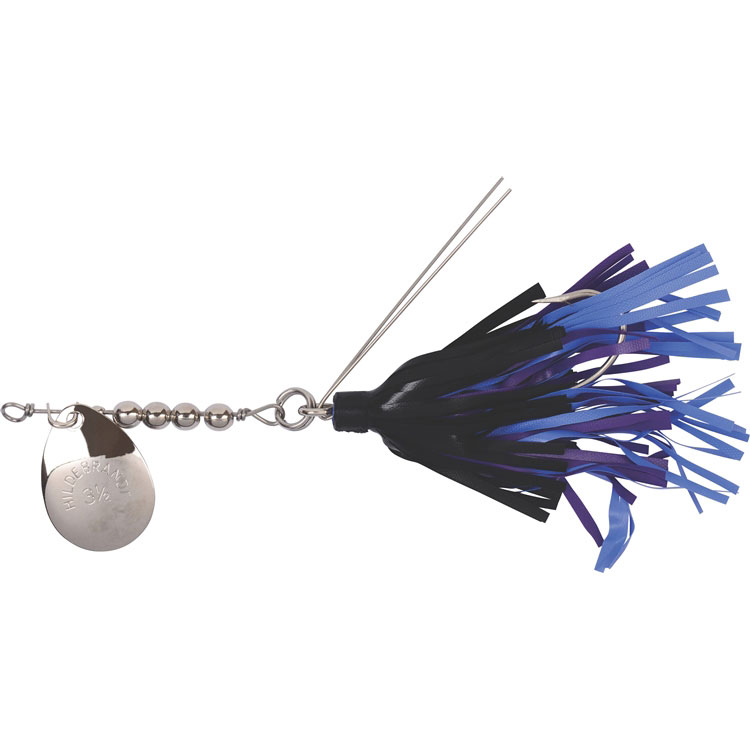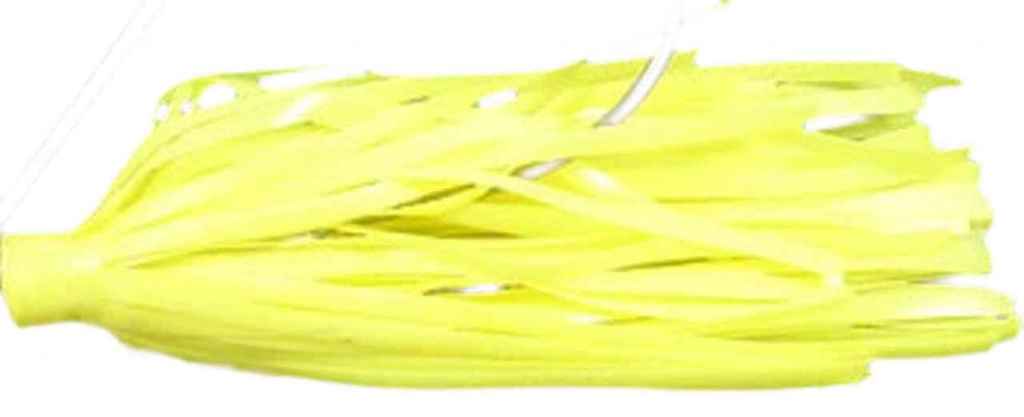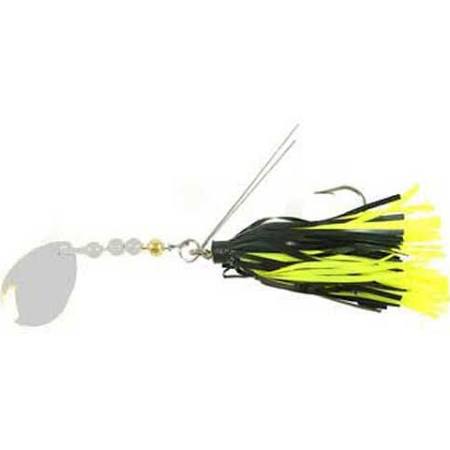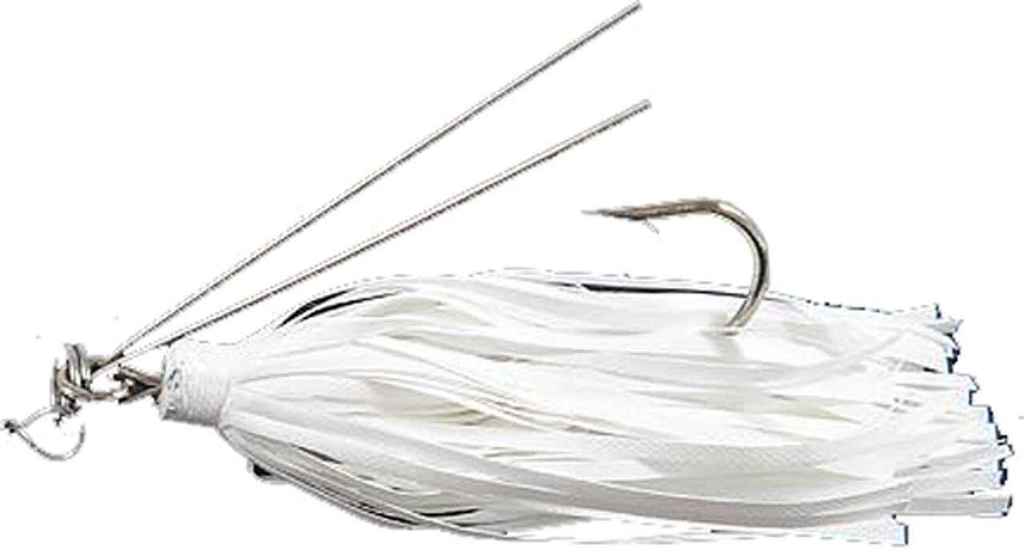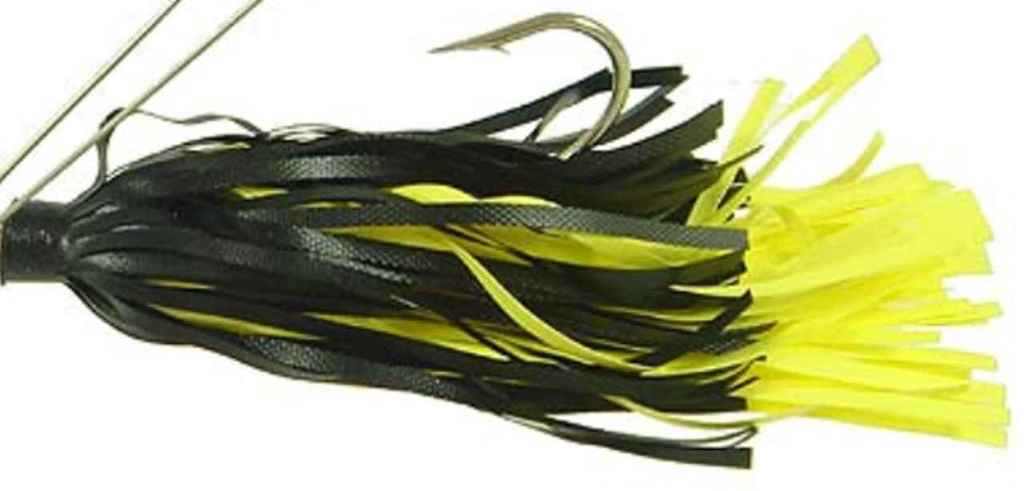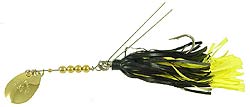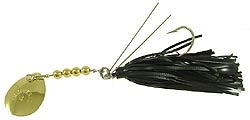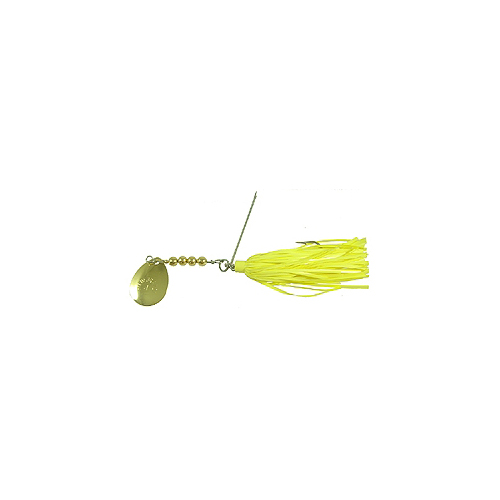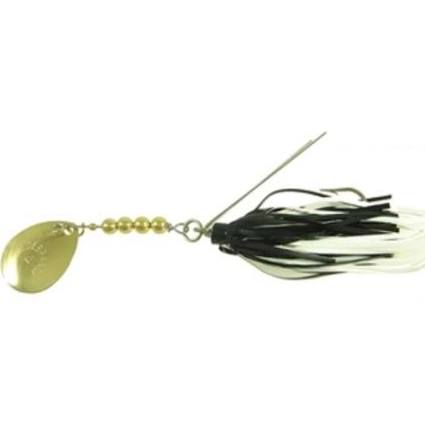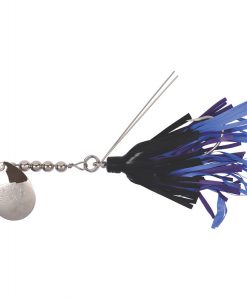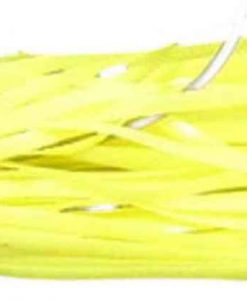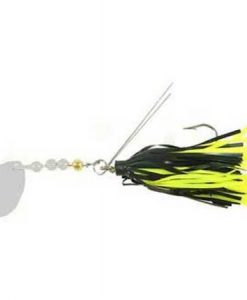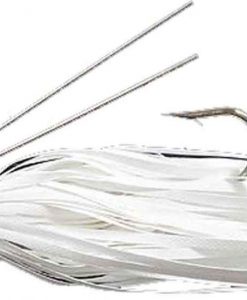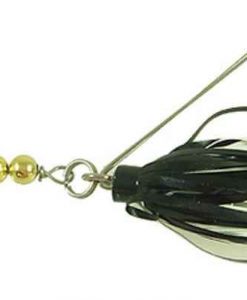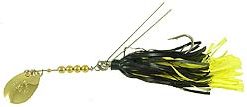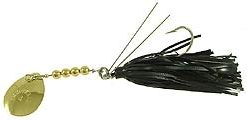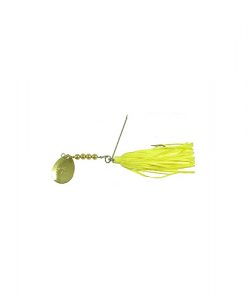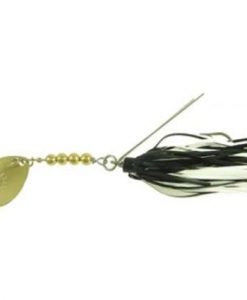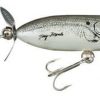Hildebrandt Snagless Sally Spinnerbait
$9.59
Snagless Sally has been a favorite lure for bass and pike for over a decade. This custom hook on the Snagless Sally features an extra wide gap with a very sharp point, perfect for luring big fish with a pork frog trailer behind the bright vinyl skirt. the larger models provide the same fish catching results for more species, like muskie and all kinds of saltwater species.
STEEPED IN TRADITION, INNOVATION AND FISHING SUCCESS
The name “Worden” is synonymous with fishing in America. From the Worden family has sprung a litany of iconic fishing brands that have changed the face of fishing in the United States and worldwide. It was 1934 when R.B. Worden founded Worden’s Floating Spinner Company, which was later renamed Yakima Bait Company in 1941. Although his earlier business had produced cast aluminum water wheels designed to produce electricity, Mr. Worden now made and sold handmade fishing flies and two and three inch bass wooden plugs with deer hair wings that caused them to spin.
Other early products included the Worden’s Featherweight Flash Spoon, Flash Fly, Spinning Fly, Twinkle Fly, and the Spoon Fly, all predecessors to some of today’s most popular and productive lures.
And it wasn’t just fishing lures that Mr. Worden created. During World War II he developed the Worden Belt Reel, a predecessor to today’s spinning reel. The Worden Belt Reel, or “belly reel” as it was called, was worn at the front of the waist and worked as a line holder. The user ran the line from the Belt Reel through the
eyelets of the fishing rod and to their hook. The Belt Reel allowed the then stiff monofilament line to come off the reel freely and due to the large spool size kept line twist at bay.
Howard Worden joined his father’s company in the late 1940’s and soon was developing lures too. One summer, during a visit to a lake in California, Howard built a weighted spinner with a willow leaf blade and a hackle tail. Called the “Retreat Special”, Yakima Bait started production on the spinner and began selling it around the region. Howard felt like the new spinner needed a better name, and, after watching the hydroplane races in Seattle that summer, began calling his new spinner, the Rooster Tail.
The Rooster Tail was mostly a regional lure until the 1960’s when a few anglers from Florida tried out sample Rooster Tails they’d received at the annual Fishing Tackle Show in Chicago and immediately caught bass using them. Soon everyone on the East Coast had to have these new, hot spinners and as they say, “the rest is history.” Today, Rooster Tail is one of the most popular spinners and are used by anglers around the globe.
Yakima Bait Company was also the originator of the Spin-N-Glo. In the early days, the Spin-N-Glo was only made up to a size #4. A larger size #2 was introduced in the 1950’s for king salmon. Howard Worden visited what was regarded as the hottest salmon fishing hole in the Pacific Northwest with his new salmon-sized Spin-N-Glo. Located just east of The Dalles, Oregon — the Columbia River’s historic fishing site known as Celilo Falls — Howard went there and shared samples of the new larger Spin-N-Glo to salmon anglers fishing downstream of the great falls. The Spin-N-Glo was a hit then and is to this day as anglers from coast-to-coast and throughout Alaska and Canada use them to catch salmon, steelhead, trout, walleye and other fish species.
In the years that have followed, Yakima Bait Company has purchased several companies and has added additional products to their offering including the Hawg Boss lure in 1986, the Helin FlatFish Company in 1988, Schoff’s Triple Teazer in 1993, Poe’s in 1994, Hildebrandt lures in 2006, Lee Sisson in 2007, Mag Lip in 2010 and Big Al’s Fish Flash in 2011.
Today, Yakima Bait Company is one of the top fishing lure manufacturers in the world, producing products under the Worden’s , Poe’s and Hildebrandt brand names. The values that established Yakima Bait Company in its early years continue on with an unwavering commitment to producing the world’s finest and most effective fishing lures.
| Weight | 2 lbs |
|---|---|
| Dimensions | 3 × 3 × 1 in |
| Size (ounces) | |
| Colors | GOLD/BLACK, GOLD/BLACK & WHITE, GOLD/BLACK & YELLOW, GOLD/YELLOW, NICKEL/BLACK & YELLOW, NICKEL/BRUISER, NICKEL/CHARTREUSE & BLACK, NICKEL/CRAWDAD, NICKEL/PURPLE, NICKEL/WHITE, NICKEL/YELLOW |
